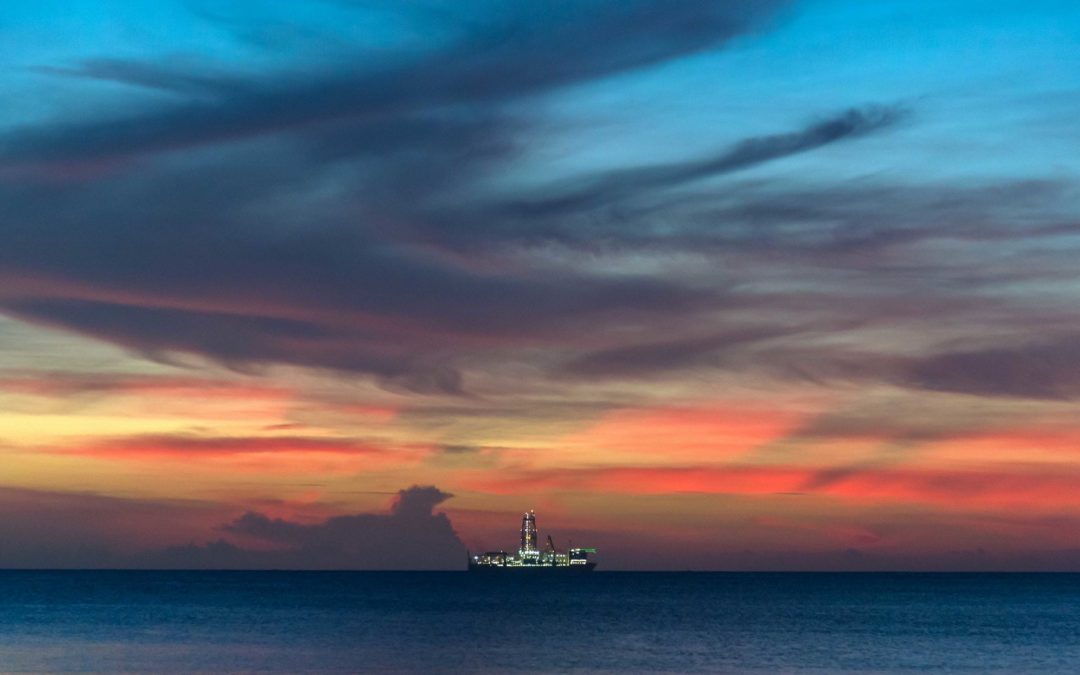Vaholmen and SafeSTS have signed an MOU to leverage their core expertise by developing a sustainable offshore terminal, which provides genuine opportunities to reduce the carbon footprint of their customers. By bringing the transhipment terminal closer to the operating fields, not only will it save fuel and emissions but it also provides a means of recovering and monetising the VOC emissions generated by the export tanker during cargo transfer operations.
The TVB Vaholmen Offshore Terminal will consist of two main elements: the TVB and the Vaholmen Unit. The TVB enables conventional tankers to moor to the TVB as if it were a calm buoy while a dynamical positioning enabled tanker stations itself close to the buoy to transfer oil via hose strings attached to the same buoy. The Vaholmen Unit includes the VOC recovery plant installed on a dynamically positioned vessel.
SafeSTS
SafeSTS has vast experience in Ship-to-Ship (STS) transfer of oil cargoes both offshore and in ports. They have developed and patented a concept for Transfer Via Buoy Terminal (TVB) to enable export tankers to load or discharge at a single point mooring (SPM) type terminal, with the DP shuttle tankers loading/discharging in DP mode, whilst keeping at a pre-determined distance from the export tanker. The DP tanker will reference its position to the buoy and orientation of the export tanker,
The TVB Terminal has no subsea structure apart from anchors and chains, and with the dual-carcass floating hoses containing the oil always visible on the surface, regular maintenance and inspection is easily conducted without the use of specialist underwater personnel and equipment.
The TVB Terminal can be located close to the production fields to provide both exceptional operational availability and increased commercial and environmental capability. With its capacity to handle 20 operations per month, VLCC tankers will only need to moor once to the TVB Terminal, to then be loaded by multiple consecutive DP shuttle tankers with various sized cargo volumes.
SafeSTS Chief Executive Yvonne Gilchrist-Mason OBE, DL believes the TVB Terminal system heralds a long awaited leap in global ship-to-ship transfer technology, saying:
“When compared to all other transhipment options, this concept delivers safety, commercial, and efficiency benefits, as well as a potentially significant reduction in greenhouse gas emissions, thereby contributing to climate change targets under the Paris Climate Agreement.
Whilst the system is primarily aimed at existing markets, the concept has the capability to create new opportunities in areas where DP shuttle vessels have not previously operated, and where environmental regulations or conditions restrict traditional ship-to-ship transfers. When combining our TVB concept with Vaholmen’s unique VOC handling concept we are providing an exceptional opportunity for our clients to reduce their CO2 footprint.”
Vaholmen
When crude oil is loaded into crude oil tankers at loading buoys or sea islands at distances from shore, the utilization of onboard VOC recovery and processing system is not economically feasible. Installing VOC recovery system on loading buoys or sea islands is not very feasible as the capture and transportation of the VOC back to shore for utilization is technically challenging and very costly.
Vaholmen VOC Recovery AS has, in close cooperation with its partners American Bureau of Shipping, Ulstein Design & Solutions AS and Wärtsilä Gas Solutions AS, developed and patented a concept that addresses the challenges caused by offshore loading of crude oil tankers. The concept includes a VOC recovery plant installed on a dynamically positioned vessel. The vessel – the Vaholmen Unit – will operate close to the loading tanker (in hold-back mode for TVB) for capturing and processing the VOC generated on the tanker through a hose connected to the tanker’s vapor return manifold. The output from the process – the liquefied VOC – can be monetized through injection into a stream of relevant hydrocarbons like crude oil, as feedstock for powerplants, refineries or others as well as providing fuel for electrical power production on the Vaholmen Unit. The value of the captured hydrocarbons will normally exceed the costs of the operation of the Vaholmen Unit.
The Vaholmen Unit can be classed as an OSV with a cargo capacity of 1 200 m3 of liquid VOC, or as gas carrier with 3 000 m3 liquid VOC loading capacity. Regardless of capacity, the Vaholmen Unit will be equipped with DP2, and with a flexible and energy efficient power system.
Arve Andersson, Chief Executive Officer of Vaholmen VOC Recovery AS, endorses Ms Gilchrist-Mason’s statement and adds:
“We have marketed our patented concept towards terminal operators worldwide already and its application with the TVB terminal provides excellent performance in reducing the GHG emissions, which are otherwise substantial.
VOC emissions represent many health and safety risks, which are eliminated by the process and these emissions are particularly damaging to the atmosphere, with their CO2 equivalents being multiples in terms of volume.
Several hundred tons of valuable hydrocarbons are released to the atmosphere during loading of each crude oil carrier. The value of the hydrocarbons captured in the liquefaction process, normally exceeds the cost for the Vaholmen operations which makes the terminal commercially and environmentally sustainable.”
As the world continues to produce oil through new or existing fields, it is incumbent upon all stakeholders to work together to minimise the environmental impact of the hydrocarbon molecules as they travel from extraction and production to end user and consumption. In combining the SafeSTS TVB concept with the Vaholmen Concept, substantial environmental benefits can be achieved.
Source: Vaholmen and SafeSTS






